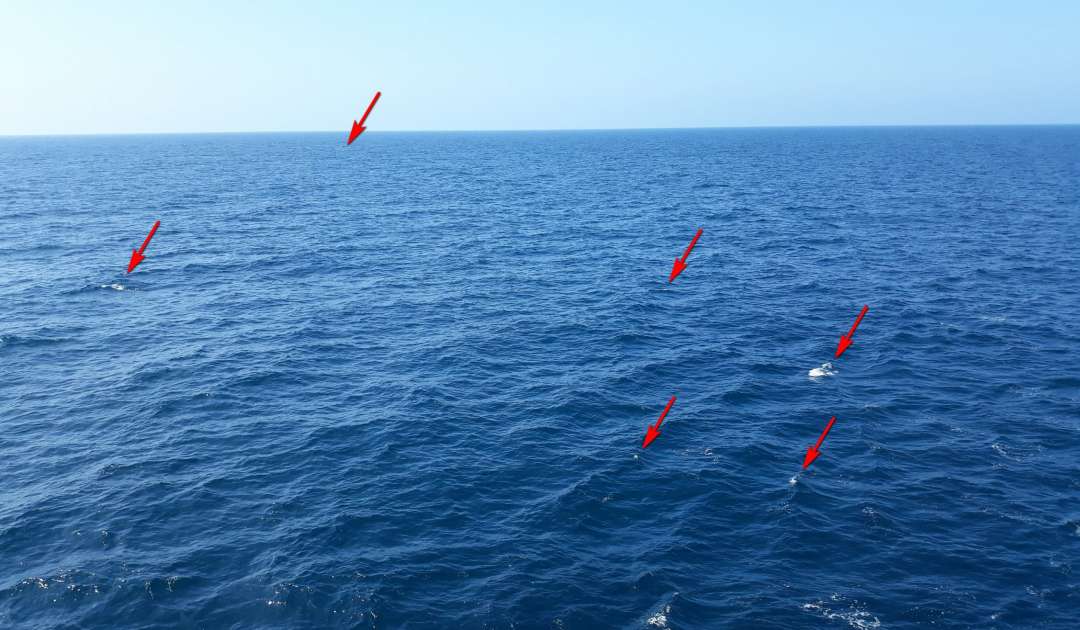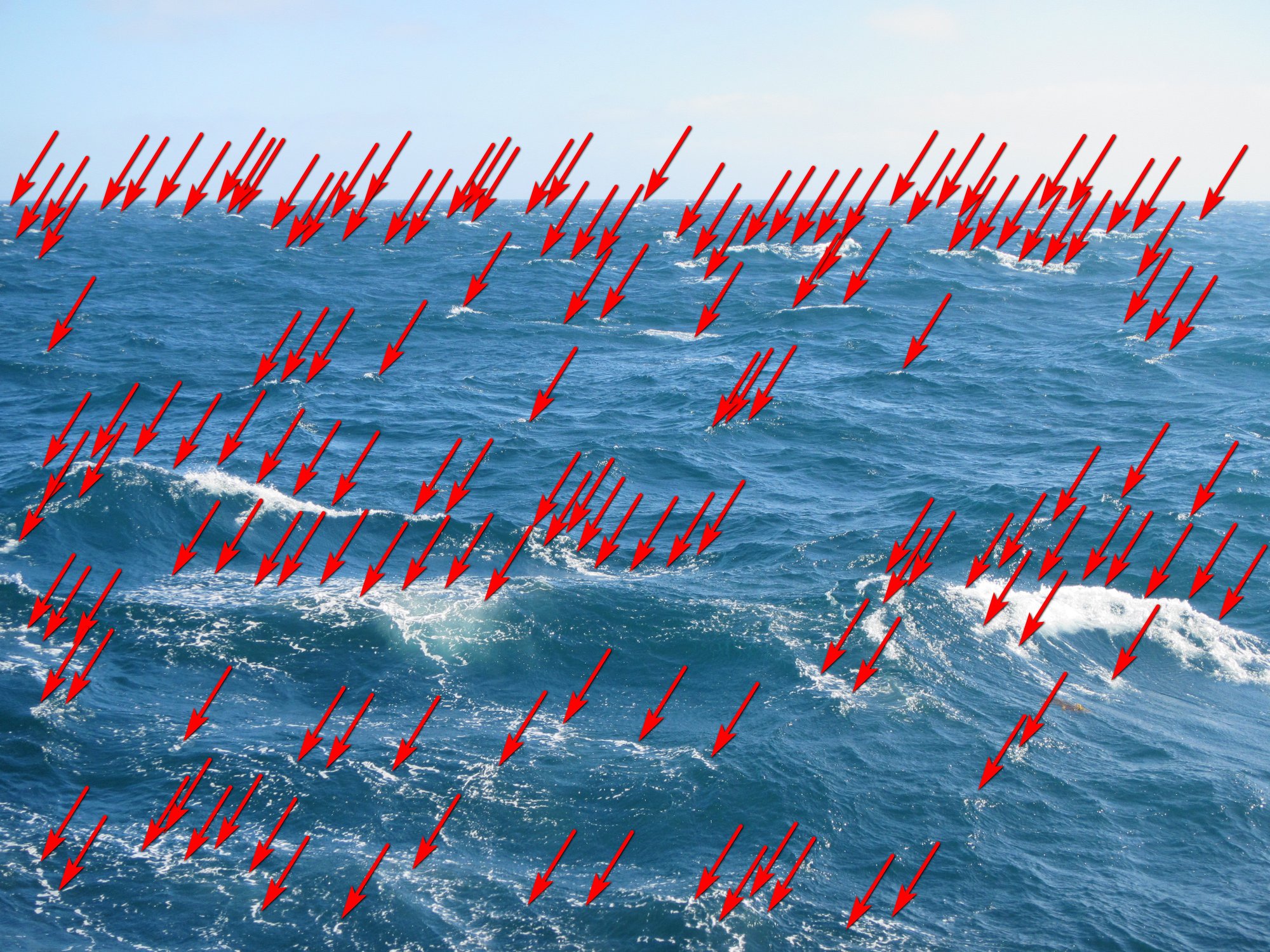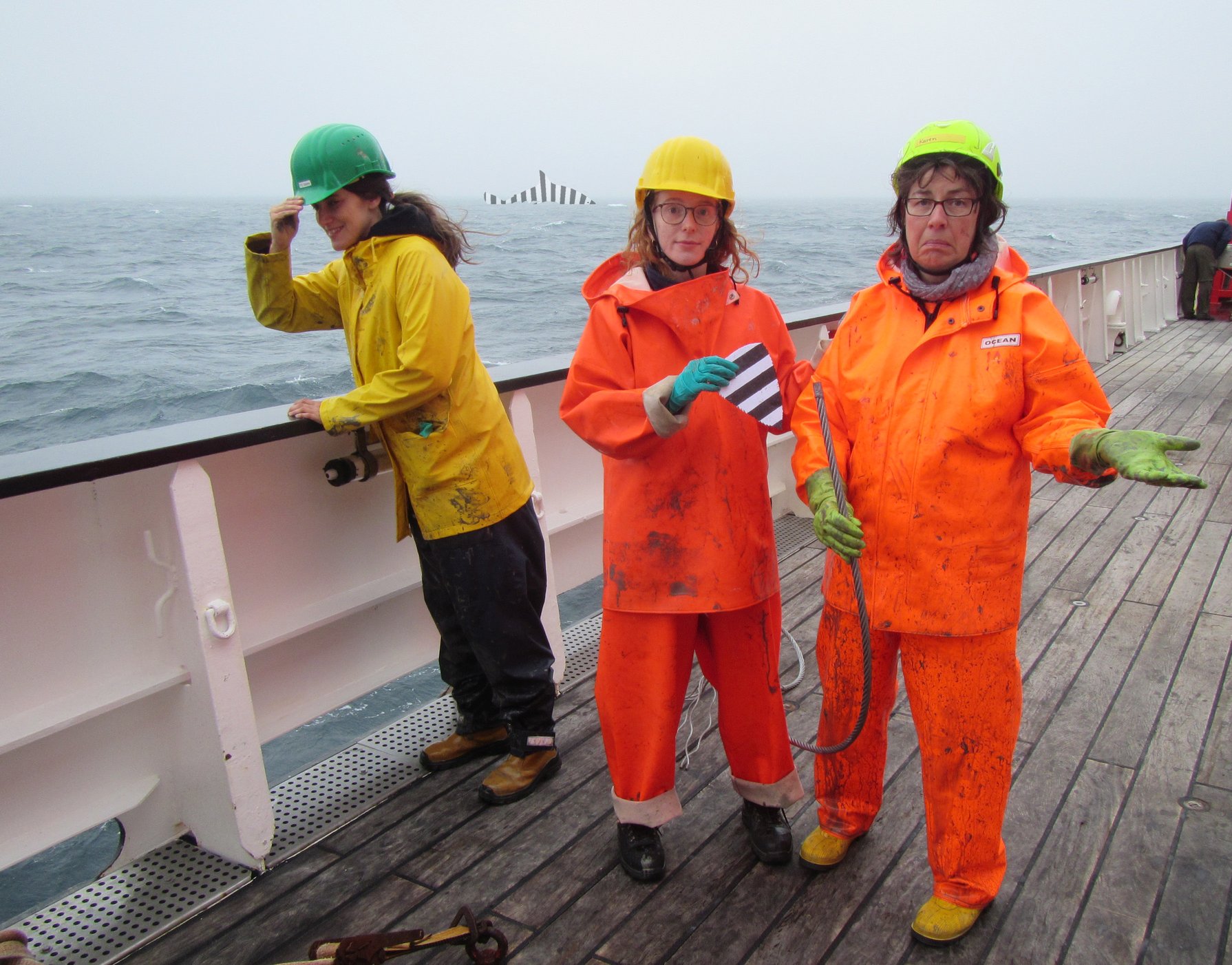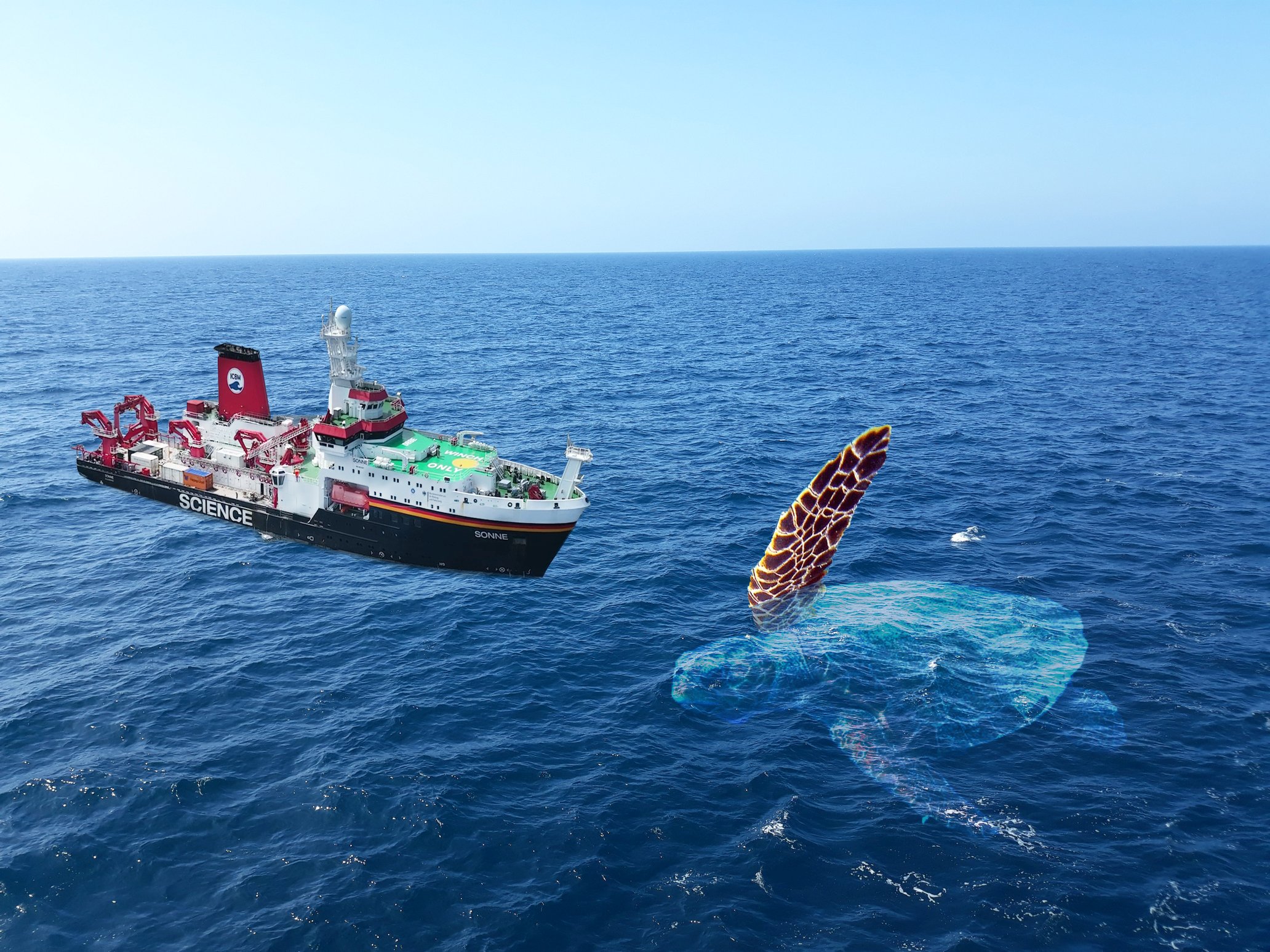Sailor's tail
Dear readers,
Today is a sunny day. It is pleasant, not too warm, not too cold. I have a ball of yarn in my pocket here at sea. A big roll of yarn.
You’ve heard quite a bit about us, about our life aboard the RV Sonne. We are now on our way home. After the many hectic weeks full of work, the days seem almost empty to us now. The ship stomps through the waves apathetically. Our lives are characterized by dull routine, boring waits on the “nothing is happening here” longitude and the “nothing is happening there” latitude. Hour after hour, day after day, on the ocean of desolation. Nothing spectacular really happens. Only now and then, unexpectedly, surprisingly and very very rarely, there are impressive encounters between us researchers and the wild animals of the ocean, which cheer up our dreary existence.
We have a good view of the water and suddenly there they are: the inconspicuous water lice. The water lice (Aquabibo lorioti; named after the discoverer of the group), are bluish colored, glass-like, translucent arthropods, small and hard to spot.
The animals live near the surface in groups of several hundred to a thousand individuals. They feed on seawater. The quite friendly little animals quickly drink large amounts of seawater and filter out the food particles. This leads to the fact that the droll little animals have to fart, which leads to small bubbles on the water surface. Only through these traces of life can we guess the presence of the cute water lice in our vicinity.
Of course, in the vastness of the seas there are not only peaceful inhabitants. Today we had an intimidating encounter with a large zebra-striped shark (Megalogiga dentiquagga). Unlike other shark species, this eye-catching shark is striped cross-wise rather than lengthwise.
Unfortunately, it has never been possible to photograph a zebra-striped shark. Zebra-striped sharks belong to the group of big game sharks and, just like the giraffe-neck shark (Megalogiga dentigiraffa) or the elephant-trunk shark (Megalogiga dentiloxo), extremely rare, they are extremely dangerous and have extremely huge teeth. We were about to retrieve a piece of equipment from the water when it was bitten off by a zebra striped shark. Luckily nothing happened to any of us.
But when we meet the gentle, peaceful and friendly sea creatures in the vastness of the seas, that compensates everything else. We already had an encounter with a Bigasanisland Seaturtle (Carettaoceanus duplomaiorinsula).
These giant turtles reach the size of an average ice sports arena when they are old. The rare animals spend their lives among the algae that grow up to 45 meters high (Macrocystis spp.) in sun-drenched kelp forests. They move from clearing to clearing only to lay their eggs. In the undergrowth of the kelp forests, they lay football-sized eggs at the base of the algae. From time to time, the turtles play with their small neighbors the whales and romp happily through the undergrowth of the kelp forests.
Of course, due to their sheer size, the Bigasanisland Seaturtles pose a danger to general shipping. Fortunately for all of us, the animals have the amazing ability to warn approaching ships by waving their fins, thus avoiding fatal collisions.
You see, there is little spectacular to tell, hardly anything worth mentioning to report and little impressive to describe.
Now I must get back to my work. I need new yarn.
A report from the Fable Research Group
Dr. Nils Nessie Bigfoot Brenke
Special Zoologist




